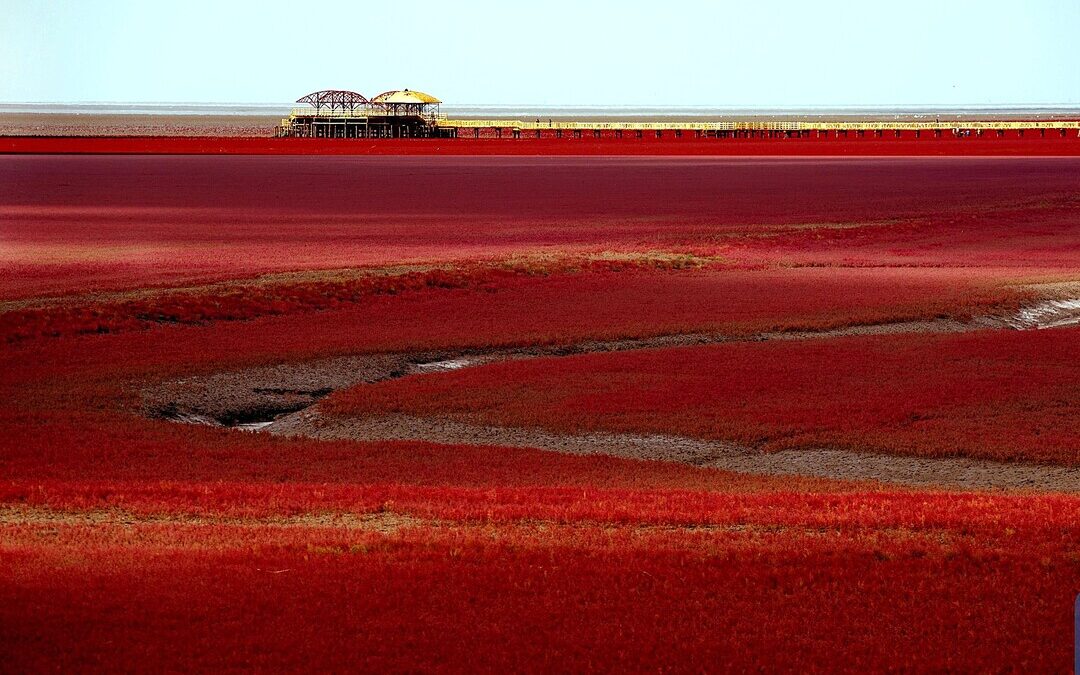China Triples Yellow River Delta Wetlands in 1 Year Using Nature-Based Solutions
China restores 2,000 hectares of coastal wetlands using nature-based microtopography, reversing decades of habitat decline.
In a landmark achievement for ecological restoration, the area of Suaeda salsa or “red carpet” marshes in China’s Yellow River Delta rebounded from a historic low of under 10 square kilometers in 2023 to 30 square kilometers in 2024 — a threefold increase in just one year.
The dramatic turnaround is credited to the large-scale application of nature-based solutions, particularly microtopography restoration, which involves the deliberate recreation of small-scale surface variations — such as mounds, hollows, ridges and pits — within a landscape to enhance ecological functions.
According to a United Nations Development Programme report, the restoration has proven to be a low-cost, high-efficiency model for coastal wetland rehabilitation.
The fragile Suaeda salsa marshes — renowned for their vibrant red hue and ecological significance — have been in sharp decline for over four decades, shrinking by more than 70 percent from their historical extent due to climate change, tidal erosion, and human activity.
The species plays a critical ecological role in improving soil quality, sequestering carbon, and providing habitat for migratory birds, such as the endangered Saunders’s gull.
Microtopography Restoration
To reverse this trend, the Dongying-based Yellow River Delta Administrative Committee scaled up an innovative NbS approach, initially piloted in a 6.7-hectare demonstration site.
By 2024, 2,000 hectares of degraded salt marsh had been restored using microtopographic features — small terrain modifications such as shallow pits and ridges — that mimic natural formations.
These microhabitats trap seeds, retain water, reduce soil salinity and promote germination and growth without extensive artificial input.
“Just 10 centimeters of terrain alteration can unlock massive ecosystem recovery,” noted project researchers, highlighting how such subtle interventions enhance the landscape’s ability to self-restore.
Unlike traditional methods involving heavy irrigation, seed broadcasting, or engineered structures, microtopography restoration leverages natural processes, offering a sustainable and scalable alternative.
Strategic Expansion and Long-Term Resilience
A newly published Coastal Salt Marsh Microtopography Restoration Manual has codified the project’s best practices and now informs broader ecological strategies across northern China.
Moreover, the restoration model has been formally integrated into the Master Plan for the Yellow River Estuary National Park.
To ensure long-term success and resilience, a Three-Year Action Plan was adopted, designating a “Three Zones and One Belt” strategy. It includes conservation, restoration, seed propagation and biomass enhancement zones across a projected 10,000-hectare area spanning 40 kilometers.
A dedicated seed propagation base has also been established to safeguard against seed shortages from extreme climate events.
Global Wetland Recovery
The initiative arrives at a critical time. By 2022, the coverage of Suaeda salsa had plummeted to just 20 square kilometers, with further losses in 2023 signaling an ecological crisis.
The recent restoration has not only reversed this decline but also restored coverage to levels last seen before 2010.
The approach’s broader implications are notable: experts believe similar NbS methods could be adapted to restore other dominant wetland species, including reeds, sedges, and glassworts, across various coastal zones.
While scalable, the report cautions that restoration efforts must be adapted to local hydrological and topographic conditions to ensure success.
As global interest in NbS grows amid climate adaptation efforts, the Yellow River Delta project offers a compelling case study in how minimal intervention can deliver maximal ecological impact.
With standardized guidelines now in place and measurable success in hand, the model sets a new benchmark for sustainable wetland restoration worldwide.
Nirmal Menon
Related posts
Subscribe
Error: Contact form not found.


